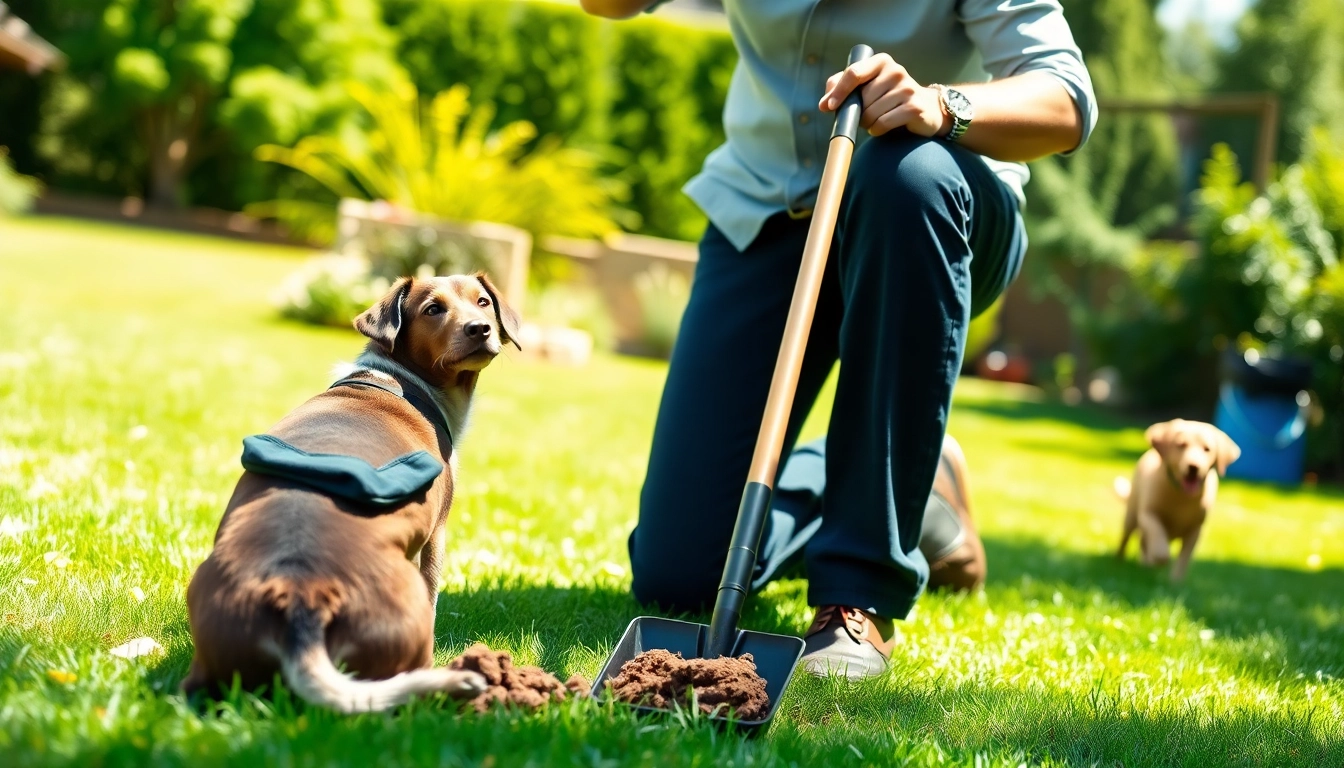Understanding PAT Testing: Essential Insights for Electrical Safety

What is PAT Testing?
Definition and Importance
Portable Appliance Testing (PAT Testing) is a process that involves the examination of electrical appliances in order to ensure their safe operation. By routinely checking equipment for safety, organizations can significantly reduce the risk of electrical accidents, which can lead to fires, shocks, or injury. PAT Testing not only serves as a precautionary measure but is also a compliance requirement for many businesses under health and safety regulations.
In its essence, PAT Testing combines both visual inspections and a series of electrical tests, assessing various parameters such as insulation resistance, earth continuity, and electrical polarity. This multifaceted approach allows for a comprehensive review of an appliance’s safety and functionality. As a result, businesses that perform regular PAT Testing help safeguard their employees and clients, ensuring that their work environments are safe and operationally sound.
Common Myths and Misconceptions
There are several myths surrounding PAT Testing that can create confusion for both employers and employees. One common misconception is that PAT Testing is a legal requirement for all electrical appliances. While the frequent testing of portable appliances is recommended, legal requirements can vary by country, and specific regulations should be reviewed in context. For instance, the UK has regulations that encourage it, but it is not mandated as an absolute necessity.
Another myth is that all equipment must be tested annually. In reality, the frequency of PAT Testing largely depends on the type of equipment, its usage, and the environment in which it operates. For instance, equipment frequently moved or used in a harsh environment may require more regular testing compared to stationary office equipment. Understanding these nuances can help ensure compliance without incurring unnecessary costs.
Legal Requirements for PAT Testing
Understanding the legal landscape surrounding PAT Testing is essential for businesses seeking to uphold safety and compliance. In many regions, while there is no explicit law mandating PAT Testing, the Health and Safety at Work Act and other related regulations imply that employers have a duty of care to ensure the safety of their electrical appliances. This often implies regular inspection and testing to mitigate risks.
The legal obligations can vary across different jurisdictions. For example, in the UK, while the HSE (Health and Safety Executive) does not mandate PAT Testing, they recommend that employers take appropriate measures to ensure the safety of electrical appliances in their workplace. Employers must also adhere to the Electricity at Work Regulations which require proper maintenance of electrical systems to avoid potential hazards.
Types of PAT Testing
Visual Inspection Methods
The first step in PAT Testing often involves a thorough visual inspection of the appliance. This includes checking for physical signs of damage, wear, or inappropriate repairs. Inspectors assess the condition of the plug, cable, and the appliance itself, ensuring that they are all in good working order. Areas of focus during the visual inspection include:
- Checking for frayed or damaged wiring
- Inspecting the condition of the fuse and plug
- Ensuring that the equipment is free of moisture and foreign objects
- Reviewing labels or warning signs in accordance with safety standards
A careful visual inspection can often identify issues that might result in faults during operation, thereby preventing future accidents.
Electrical Testing Procedures
In addition to visual inspections, several electrical testing procedures form a crucial part of PAT Testing. These tests examine the operational integrity of the equipment. Key tests include:
- Insulation Resistance Test: This measures the resistance offered by the insulation between the live conductor and the earth of the appliance.
- Earth Continuity Test: This ensures that the equipment is effectively earthed to prevent electrical shock hazards.
- Polarity Test: This checks that the live and neutral conductors are connected correctly.
- Functional Test: This ensures that the equipment operates correctly during normal use.
These testing procedures can often identify risks that are not visible during a standard inspection, offering an essential safety net for users.
Frequency of PAT Testing
Determining the frequency of PAT Testing is dependent on several factors, including the type of equipment, its usage, and the working environment. High-risk equipment, such as those used in construction or industrial settings, may require frequent checks, potentially every three to six months. However, standard office equipment might only require testing annually or biannually.
Employers should carry out risk assessments to ascertain appropriate testing intervals for their appliances. Factors such as usage patterns and the surrounding environment should guide these assessments, alongside recommendations from manufacturers and industry best practices.
Benefits of Regular PAT Testing
Increased Safety for Users
The most immediate benefit of regular PAT Testing is the enhanced safety it provides to users. By identifying and rectifying potential electrical issues before they result in accidents, businesses can create a safer working environment. This not only protects employees but also reduces the risk of liability for workplace injuries due to electrical hazards.
Reduced Risk of Equipment Failures
Regular PAT Testing can significantly decrease the likelihood of unexpected equipment failures. By identifying wear and tear or malfunctioning components early, businesses can perform repairs proactively, often avoiding costly downtime and emergency repairs. This not only maintains productivity but also extends the life of the appliances, yielding greater returns on investment.
Legal and Insurance Compliance
Many insurance policies require assurance that proper safety protocols, including PAT Testing, are in effect. Regularly performing PAT Tests can help businesses maintain compliance with legal requirements and industry standards, reducing potential penalties or increased premiums. Documentation of PAT Testing can also be invaluable in the event of audits or insurance claims related to electrical accidents.
PAT Testing Procedures
Step-by-Step Guide to Performing PAT Testing
Conducting PAT Testing in an effective manner involves several structured steps:
- Preparation: Gather all necessary tools, equipment, and documentation.
- Visual Inspection: Conduct a comprehensive visual inspection as detailed above.
- Electrical Testing: Use appropriate tools to perform the defined electrical tests.
- Document Results: Record the outcomes of the tests in compliance with organizational policies.
- Take Action: If any failures are noted, determine the necessary repairs or replace equipment as needed.
By following these steps thoroughly, PAT Testing can be conducted efficiently and safely, ensuring that all appliances are compliant and operational.
Tools and Equipment Needed
Various tools are required for proper PAT Testing. Essential equipment includes:
- A PAT tester for conducting electrical tests
- A multimeter for measuring voltage and current
- Insulation resistance testers
- Basic hand tools for checking the physical condition of equipment
Having reliable tools is crucial for accurate testing and ensures that safety checks are thorough.
Understanding Test Results and Documentation
After conducting PAT Tests, it is vital to interpret the results correctly. Test results should be documented thoroughly, detailing both passed and failed appliances. Proper documentation enhances accountability and ensures that appropriate corrective actions can be taken on failing equipment. This documentation should be systematically archived and can serve as a basis for developing future safety protocols.
Choosing a PAT Testing Service Provider
What to Look for in a PAT Testing Company
When selecting a PAT Testing service provider, several factors should be considered to ensure quality and reliability:
- Qualifications and Experience: Ensure the provider has qualified personnel with ample experience in PAT Testing.
- Accreditations: Look for certifications such as ISO or membership in relevant professional organizations.
- Comprehensive Services: Choose a provider that offers a complete service package, including visual inspections and full testing.
- Sample Reports: Request to see examples of inspection reports to understand their documentation process.
These criteria can help facilitate an informed decision when selecting a service provider.
Cost Considerations for PAT Testing Services
The cost of PAT Testing services can vary significantly based on several factors, including the number of appliances being tested, the complexity of the tests required, and the regional market rates. It is advisable to seek multiple quotes before making a decision, but keep in mind that the cheapest option may not always be the best in terms of quality and service. Companies should assess the overall value offered based on thoroughness and efficacy in testing.
Frequently Asked Questions
To provide clarity on PAT Testing, here are several frequently asked questions:
- Q: How often should PAT Testing be conducted?
A: The frequency depends on the type of equipment and its use, often ranging from quarterly to annually. - Q: Can I perform PAT Testing myself?
A: While some businesses opt to do internal testing, it is generally recommended to hire a qualified professional for comprehensive testing. - Q: What happens if equipment fails a PAT Test?
A: Equipment that fails must be removed from service, repaired or replaced, and subsequently retested.
Such questions reflect common concerns employers may encounter regarding PAT Testing and help clarify the importance of this crucial safety procedure.








